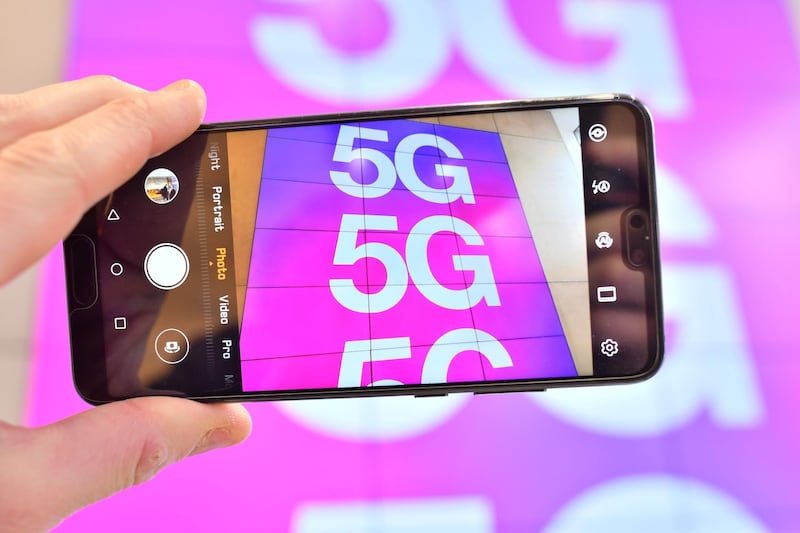Washington’s campaign to persuade nations around the world to refrain from using China’s Huawei in building their fifth-generation mobile networks is stalling.
Despite the argument put forward by the US that the Chinese company could one day be a security threat (an argument the latter strongly refutes), Britain said on Tuesday it is to allow Huawei limited access to its future 5G network. On Wednesday, the EU announced it would follow suit. These decisions recognise the truth that if you want 5G and its super-fast internet speeds then you have little option but to turn to Huawei.
If there were a real alternative to Huawei in terms of equipment for 5G, this wouldn’t be a debate.
Europe led in the 2G era, Japan led 3G and the US led 4G. Now it is China’s turn.
It is worth noting ever since 2G first allowed for secure and ubiquitous voice and SMS, there has been a fair amount of hysteria around the adoption of subsequent generations of cellular technology – both positive and negative. 5G is no different, even if it is expected to provide us with a fully interconnected society.
Huawei, ahead of Cisco in the US, Europe’s Nokia and Ericsson, Japan’s Rakuten and South Korea’s Samsung, has emerged to become the dominant force in this area of communications technology. While Huawei disputes the accusation it receives preferential treatment from the Chinese government, what cannot be disputed is that the unique environment created in China is what allowed it to become the world’s largest maker of telecoms equipment.
Equally indubitable today is that the US and Europe have lost the 5G battle to China. The question now is are they also losing the wider war to lead a digital future?
According to Bloomberg, the US is the ninth most innovative country in the world. Seven years ago, it was ranked first. China is only at 15th, but is rising. More than half the top ten is made up of European nations like Germany, which is number one, and Switzerland, which is fourth. South Korea and Singapore are second and third, respectively.
The scale of an economy is not necessarily an arbiter of success in innovation, but the wider takeaway of the Huawei story is that the development of new technology should not be left to either the public or private sector to decide alone.
The market cannot be trusted to put strategic areas of development ahead of profit when necessary, and governments are rarely efficient or competitive enough to develop anything on their own.
Apple, Qualcomm, Cisco and Intel have failed to lead the worldwide push into 5G. Lucent and Motorola were unable to remain competitive over the years. This is partly because the economics of new investment didn’t always make sense, especially when one is already ahead of the pack in the prevailing technology of the day. Another reason is that the government has a role to play in encouraging the adoption of the next generation of technology even if it isn’t profitable yet and Washington seems to have dropped the ball on 5G. That is despite the rich tradition of public-private partnership in the innovation of new technologies in America.
Founded by Alexander Graham Bell, the inventor of the telephone, Bell Labs – ironically enough now owned by Nokia – pioneered research into the transistor, semiconductors and microwaves in the last century. Work carried out at Bell Labs underpins much of modern computing and communications. Its efforts were indirectly funded by the government through the telephone monopoly that the lab’s parent AT&T enjoyed. There were also institutions across the states that were fuelled by government funding directly – one example being Stanford University, from which today’s hotbed of innovation Silicon Valley has evolved.
Big tech companies like Facebook and Google have grown to dominate thanks to the explosion of mobile communications. Their phenomenal success today, however, may hamper breakthroughs in the future. Big companies don’t behave like start-ups and often fail to innovate even when they have an advantage. That’s why government regulation also has to be right. Lessons have been learned from how fractured standards for mobile telephony became in the US.
On to the next battlegrounds. For example in artificial intelligence, the US and China are ahead of Europe.
Although, China has the upper hand, first and foremost thanks to a huge population from which to take the data sets that inform AI. For much the same reason, it also has a bigger talent pool from which to hire. The US will have to be more nimble and work smarter than China in order to win. It seems Washington is making sure that the public and private sectors – linking up government, universities and companies – have every opportunity to work together as a matter of policy. For AI at least it is not being left up to the market alone to decide how technology develops in the US.
Mustafa Alrawi is an assistant editor-in-chief at The National






